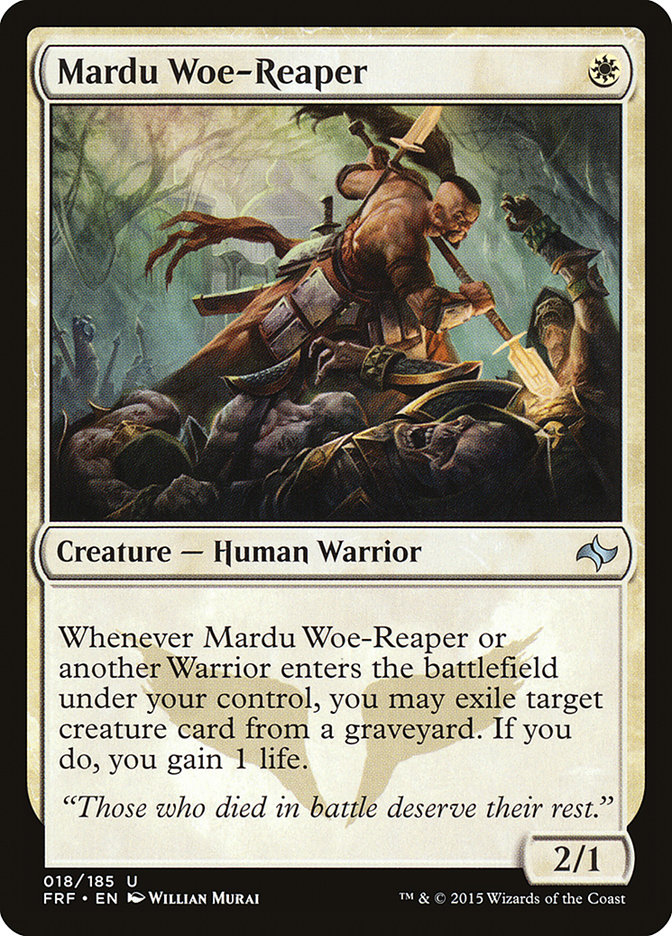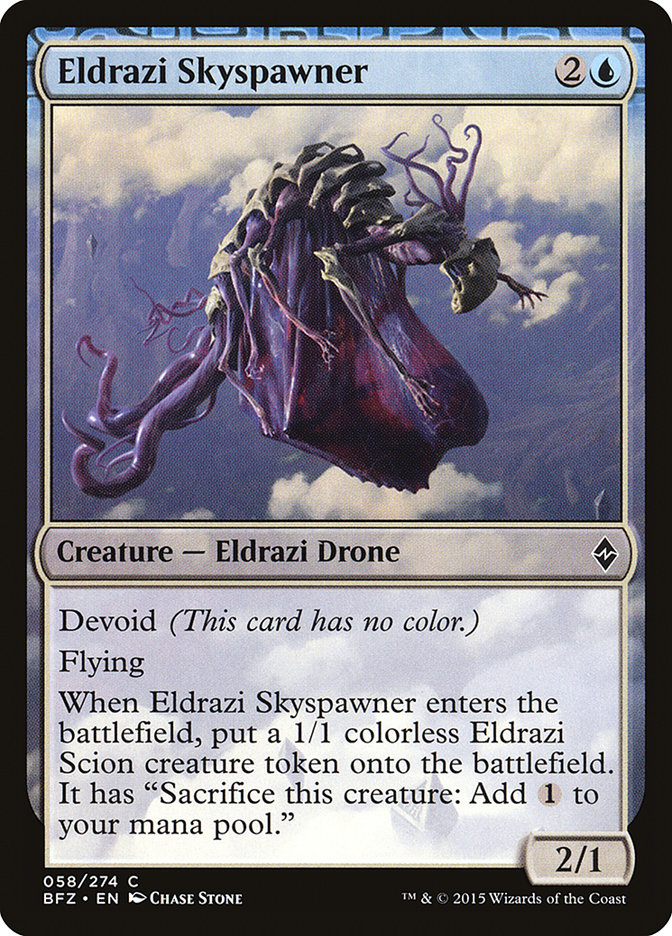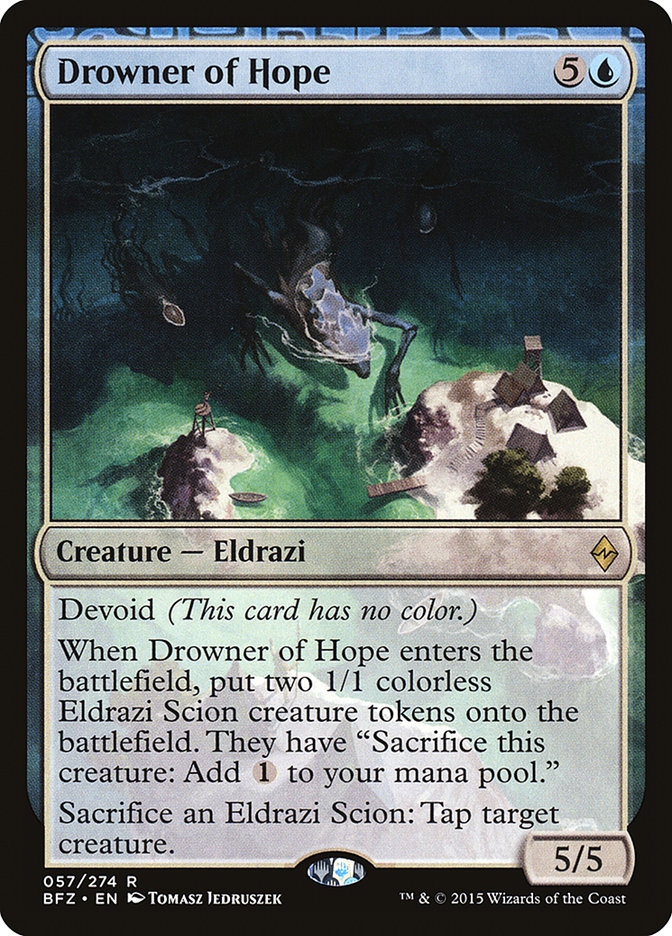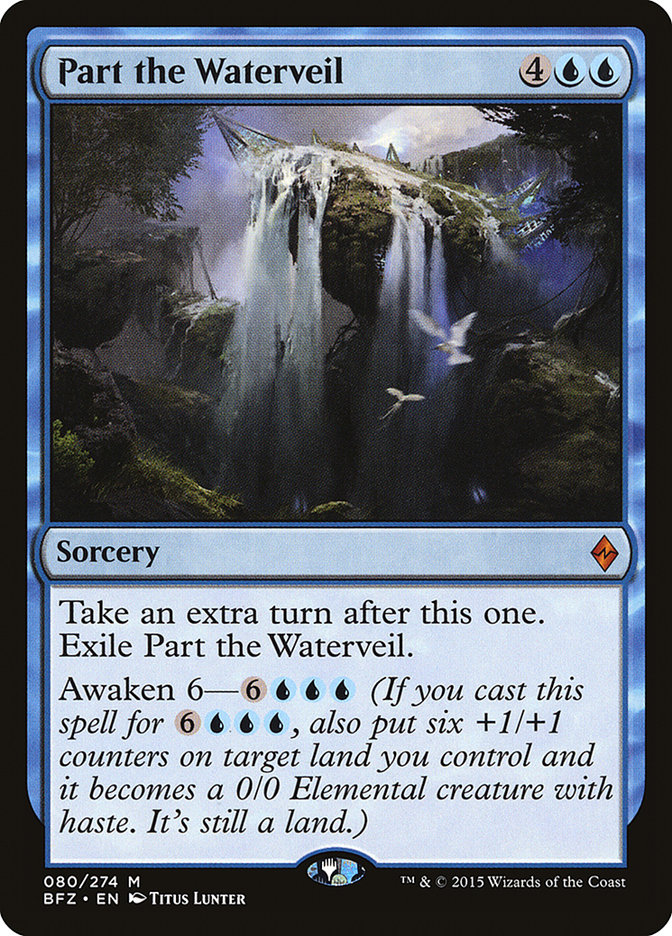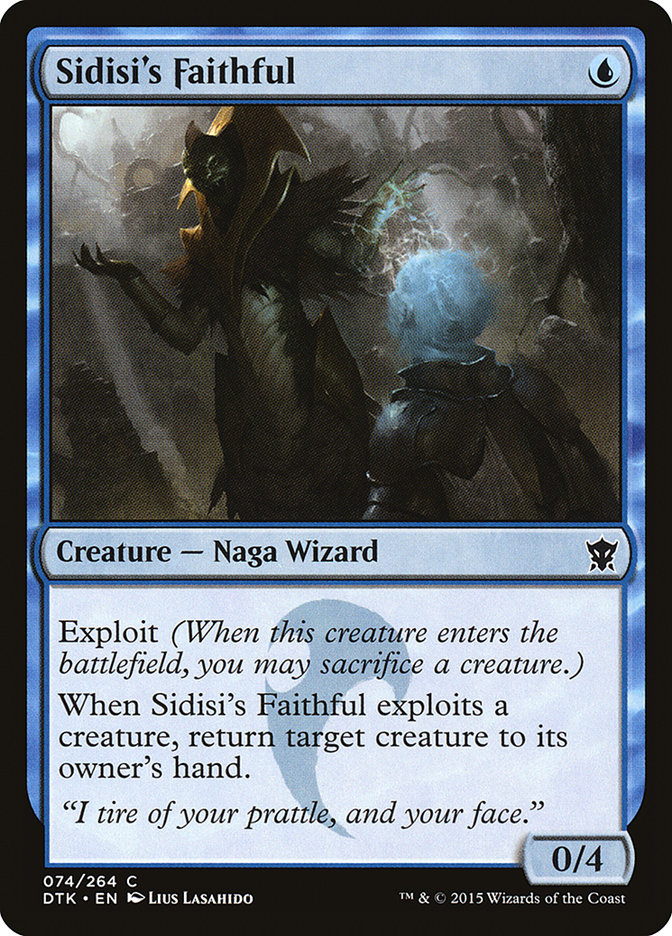I’ve attacked with a surprising number of small white creatures in my career. It always seems like a pretty bad plan in theory, but somehow I just keep
getting pulled into doing it in different ways. The Aristocrats from Pro Tour Gatecrash isn’t my first aggressive
white deck, but it may be the one I’m best known for. Since then, I’ve played aggressive white decks in Standard both times I played in the World
Championships despite that not being a choice any other player made in either event.
I’ve been playing white throughout this Standard season, but things seem to have changed a lot while I was taking a break from Standard to play Legacy,
Limited, and Modern. The last time I played Standard, Jeskai Black had been the deck to beat, which lead to a rise in ramp decks and token decks. From what
I gather from casual observation, Abzan Aggro got a little more aggressive, which, I assume, pushed the ramp decks out of the format. I think there was
also a brief spike in Rally the Ancestors decks, but I assume they don’t do especially well in a field full of decks with four maindeck Anafenza, the
Foremost. I saw that the trial winners at #GPKobe featured nine Abzan decks out of fourteen total decks. However, in the actual Grand Prix, Abzan didn’t
seem to rise to the top. Esper Dragons did well, and I assume that’s largely on the back of a good Abzan matchup, but the final was between an unusual B/W Warriors deck and Atarka Red.
When a deck that I’m confident very few people in an event were playing does extremely well, I try to take notice. When 25% of the field is Abzan, you
expect at least one of them to make the top 8, and it doesn’t really say much about how good the deck is. When a deck you’ve never seen before has only a
single pilot and that pilot makes the top 8, there’s probably something going on there.
This strategy is how I ended up putting time into Amulet Bloom and Lantern Control in Modern, so I’m currently pretty happy with the results. So, as it
came time to work on Standard again, the first thing I did was put together Joe Soh’s B/W Warrior deck and play eight leagues with it on Magic Online.
Eight is a lot of leagues. That’s 40 matches. I like the deck a lot. The Savannah Lions impressed me.
Preparing for #GPIndy, Craig Wescoe shared the deck he was going to play with the rest of Team UltraPro. It was
a Wasteland Strangler deck with four Mardu Woe-Reapers. I got what he was trying to do with the deck, but I couldn’t bring myself to play it in the Grand
Prix because I wasn’t particularly confident that Mardu Woe-Reaper would have any impact on the game. This deck was just trying to do too many things I
didn’t know were good.
Joe Soh’s deck goes further to make the cheap Warriors good by playing eight “Warrior lords” in Blood-Chin Rager and Chief of the Edge. All of these cards
look terrible, but they play out remarkably well together.
While other people are playing tapped lands to set up their colors, you’re putting creatures onto the battlefield and attacking. By the time they have
their own creatures on the battlefield, either they can’t block because of Blood-Chin Rager, a block just trades down on mana because of Chief of the Edge,
or your roughly twelve maindeck removal spells just kill the blocker and you keep attacking. More often than not, decks like Jeskai, Abzan, and Esper die
before they can empty their hand.
This deck is horrible at topdeck wars–the individual cards tend to be very low power, so if you get to the point where you’re just trading cards off the
top, you’ll usually lose, but most games never get to this point.
When Abzan lost Courser of Kruphix, I wondered if that would be the end of the archetype, but it hasn’t been, and the deck keeps performing. This deck
punishes them for not having Courser of Kruphix, and even more, for not having Drown in Sorrow.
The primary reason this deck wins is because so few people are playing sweepers, and when someone is, you can prepare for it with a combination of
counterspells, discard, and Mastery of the Unseen.
Is this deck the next big thing?
No.
As we saw in the Grand Prix, it lost to Atarka Red. That wasn’t a fluke. I’ve been getting crushed by Atarka’s Command decks of all flavors. Almost all of
my losses are either to Atarka’s Command decks or Woodland Wanderer decks with Radiant Flames (the Woodland Wanderer isn’t a problem, but the Radiant
Flames is, and the aggressive nature of their deck prevents you from winning with Mastery of the Unseen).
Now that I understand this Warrior deck and I see how well 2/1s for one can play in this format, I’m looking at Craig Wescoe’s deck again. It’s tuned for a
slightly different metagame than we currently see, but Knight of the White Orchid is a much better blocker than Blood-Chin Rager, and Archangel of Tithes
is a real game changer against red, so I’m hoping that can shore up the matchup there without losing too much against other decks, but I’m skeptical. Mardu
Woe-Reaper hasn’t been bad–randomly attacking graveyards is actually pretty good, but the games when it really shines are when Blood-Chin Rager and Chief
of the Edge keep it relevant into the midgame, allowing you to create a fast clock that the opponent can’t stop.
The other thing that’s stood out about Standard is how open the format is. After the Pro Tour, I thought it may collapse into Jeskai versus the field. Then
later, it looked like it’d be Abzan versus the field, but that’s just not what’s going on. The deck to beat changes, and so does the supporting cast. Battle for Zendikar is a weird set, and it’s taking time to find everything. Very recently, the world discovered Eldrazi Skyspawner, Drowner of
Hope, and Part the Waterveil as cards that are potentially playable in Constructed. They may not be all-stars, but they’re definitely functional. Seeing
things change this much, and seeing this many fringe ideas find some success gives me hope for innovation even late in this Standard format, and it doesn’t
take much to get me brewing.
The interaction between Eldrazi Skyspawner and Wingmate Roc is really appealing. I’ve had a lot of good times with Wingmate Roc, and Eldrazi Skyspawner
makes it extremely likely that you’ll have a creature to raid with, and if they don’t have a blocker on the ground, even if they kill the 2/1 flier, the
1/1 can attack and then sacrifice itself to let you make two 3/4 fliers on turn 4. If they do have a blocker but don’t kill the 2/1, then you can attack
with that and then sacrifice the Scion. If they kill the Scion, there’s a good chance you’ll still have the 2/1 to raid later. Also, both cards just
generally play well with trying to go wide or trying to fly over. So, of course, my first brew tries to take advantage of these things:
Creatures (26)
- 4 Knight of the White Orchid
- 4 Wingmate Roc
- 1 Stratus Dancer
- 3 Palace Familiar
- 3 Silumgar Sorcerer
- 2 Sidisi's Faithful
- 2 Kytheon, Hero of Akros
- 3 Whirler Rogue
- 4 Eldrazi Skyspawner
Planeswalkers (1)
Lands (25)
Spells (8)

My goal here is to go wide like other token decks but to do so primarily with fliers so that every threat matters and people will easily get within range
of lethal Retreat to Emeria pumps. This deck plays very few interactive cards and really maximizes the number of threats, with the idea being that you
don’t care as much about their creatures if yours have evasion. The abundant tokens fuel a few exploit creatures in addition to just giving you more
attackers. Sidisi’s Faithful is there as much to block early against aggressive decks as it is to bounce things, but it plays very well as a split card
here. Part the Waterveil is kind of like another Overrun, making all your creatures that get through deal extra damage, and it might just be a bad Retreat
to Emeria, but I want to try it out.
I’m not very confident in most of the numbers here, but I think the things I’m doing are coherent, and the curve is reasonable. I started with Hangarback
Walker, but decided that without much removal it was too likely my opponent would have Anafenza, and its role in prolonging the game isn’t really what I
want–I want something a bit more aggressive.
The sideboard is almost entirely devoted to the red matchup. In general, evasive attackers are weak against smaller non-evasive attackers. They’re not
trying to block anyway, so the fact that you’re paying to make it so they can’t means you’re getting a bad rate. Given that the red deck is common and
good, I figured I wanted to beat them, and I’d need a lot of help to do it. I expect this sideboard would change with testing, as I figured out what else I
needed. This deck is very much in its infancy.
The other new deck I’ve put together is also based on Eldrazi Skyspawner, but goes in a very different direction with it.
Creatures (27)
- 3 Sidisi's Faithful
- 4 Drowner of Hope
- 4 Smothering Abomination
- 4 Catacomb Sifter
- 4 Blisterpod
- 4 Carrier Thrall
- 4 Eldrazi Skyspawner
Planeswalkers (2)
Lands (25)
Spells (6)

This deck is weird. It looks sort of like a Collected Company/Rally/Nantuko Husk deck, but it doesn’t play any of those cards. No Zulaport Cutthroat, no
Liliana, Heretical Healer. Instead, it plays twenty creatures that make Eldrazi Scions. The fact that the gameplan is to make a lot of creatures that can
sacrifice themselves at will means Smothering Abomination doesn’t require another sacrifice outlet to be great. The fact that all of your tokens and most
of your creatures are colorless means that Ugin, the Spirit Dragon will barely affect your side of the battlefield, and the fact that all your tokens make
mana means it’s easy to cast.
Drowner of Hope helps ramp to Ugin, lets your Scions “block” fliers, and offers a high impact creature to dig for with Evolutionary Leap-it even continues
to fuel additional Leap activations.
This is another deck that’s in its infancy, but I’m optimistic about what’s going on here. I’ve played with a lot of decks like this, and there’s
definitely the potential that this addresses a lot of weaknesses of other versions, specifically, the blue cards add a lot to the deck’s defensive
capabilities, especially against fliers.
The omission of Zulaport Cutthroat feels odd, but without cards like Collected Company and Rally the Ancestors that put things onto the battlefield while
generating card advantage, it felt like a card that just allowed my opponent to trade removal with my cards at a one-for-one rate, which isn’t something
I’m looking to do. Sidisi’s Faithful and Smothering Abomination are the only creatures I have now that don’t leave something behind when they’re killed,
and Sidisi’s Faithful is hard to kill and has an immediate impact if they don’t kill it at instant speed. Smothering Abomination will usually draw cards as
soon as I play it when I need to, so I’m ahead even if they kill it, because I’ve gotten to turn Eldrazi Sions into cards.
While being slightly less obvious about it, this sideboard is also aimed almost entirely at beating red decks. Duress and Dispel are good against control
decks as well, but most importantly, I’ve found them to be good at fighting red in this kind of deck, where the most important thing is to stop them from
resolving a Temur Battle Rage or Atarka’s Command to get around your efforts to block their tokens with your own.
It can be hard to catch up with a format after being away from it for a month, but I’m happy to see how fresh Standard feels, and I’m looking forward to
trying to end the year with a solid finish at #SCGINVI in Las Vegas, ideally with a sweet deck.

